How to design an outdoor kitchen
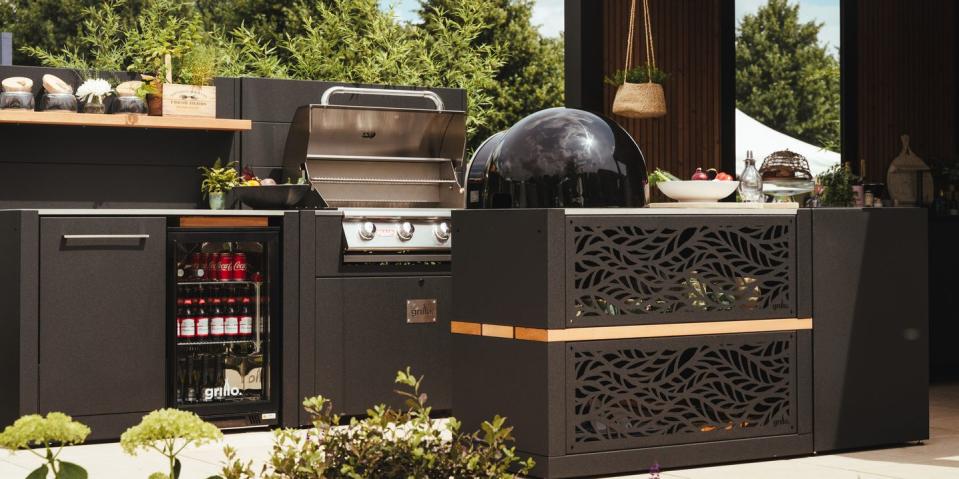
Summer may have faded into glorious autumn but create an outdoor kitchen and you can carry on cooking and dining alfresco the whole year round. An outdoor kitchen can be as simple as a BBQ with surrounding units for easy food prep, to a full-scale set-up with a sink, tap, refrigerator and multiple cooking appliances.
The joy of a garden kitchen is that you can customise it entirely to your needs, without the worry of designing a 'normal' kitchen, such as fitting everything into a limited space with awkward walls.
'Twenty years ago, people bought a £100 B&Q barbecue and that was the extent of their outdoor entertaining,' says Ross Worrod, business development spokesperson for British outdoor kitchen specialists Grillo – their outdoor kitchen layouts start from £4,270 inc VAT. 'Then 10 years ago, the trend shifted to larger freestanding gas barbecues. Barbecue manufacturers started to introduce new products to their ranges such as side tables for barbecues, as keen cooks were looking for a place to put their raw or cooked food. This has now developed into the outdoor kitchen, as we know it now.'
What to consider when designing an outdoor kitchen
For an outdoor kitchen the basic building blocks are an integrated barbecue and a work surface for preparing your delicious outdoor dishes. However, most outdoor kitchens also have an oven of some sort, perhaps a pizza oven which can be put to multipurpose use.
Another useful addition is a plumbed sink to help with food prep. 'But why leave it there, when you could include an outdoor fridge, to offer your guests a cold drink, storage or a built-in bar table with stools, to bring them even closer to the experience?,' says Ross.

Outdoor kitchens are meant to be a fun addition to a home. Thinking about your ideal design should free up your imagination. 'You can tailor it to mimic your interior kitchen, or mix it up with interesting tiles to create a really bespoke look,' says garden designer Pollyanna Wilkinson.
If you're stuck for inspiration, look to your existing kitchen. If your outdoor kitchen is next to the house, it can be neat to create a mirror image. Search online for examples of single-wall galley kitchens to help prioritise what elements you need where.
'Lighting is such an important factor for an outdoor kitchen,' says Katie Thomas, founder of interior design company KTM Design. 'Bright, white task lighting brings focus to cooking and food prepping, whereas warm, yellow lighting can be used to create calming and sociable areas.'
Think multi-dimensional; low-level recessed wall spots will cast an ambient glow across the floor and define pathways, and an outdoor table lamp helps to create an ambient vibe.
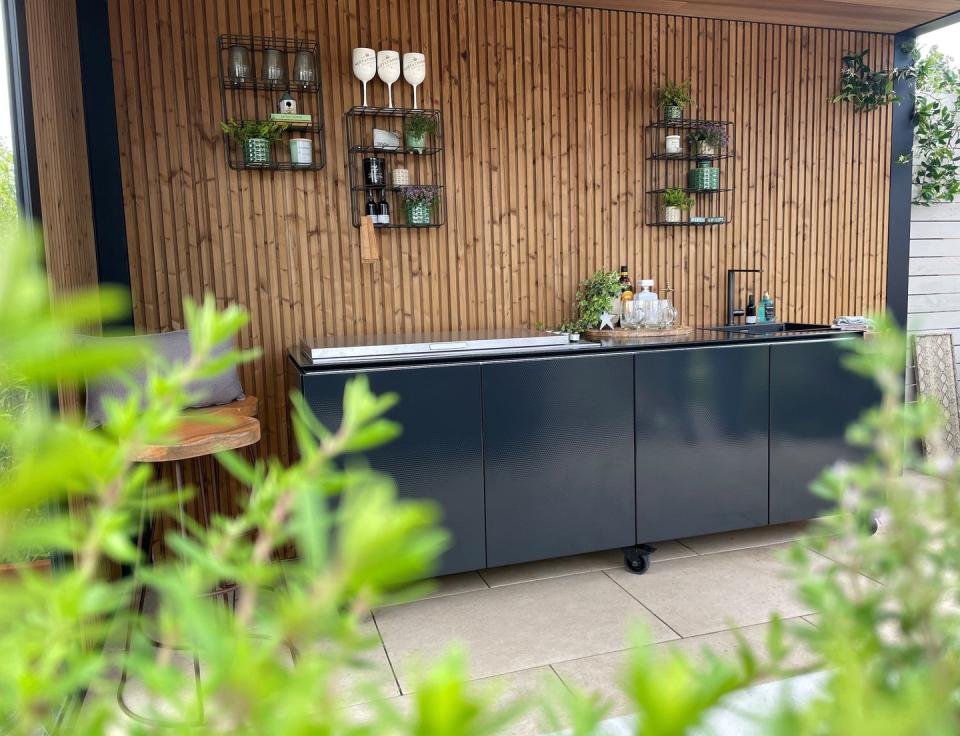
Benji Lewis, creator of virtual interior design consultancy Zoom That Room, reminds us not to overlook storage: 'Think of ways to make your life as easy as possible; cupboard space and drawers for storing outdoor dinner service and utensils, and then of course sensible accessible storage for outdoor cushions and table linen.'
When planning work surfaces remember you will need to keep cooked and uncooked food separate to avoid contamination. And factor in planting space for herbs, perhaps in a raised bed. Then you will always have basil for pizza, rosemary for lamb and chives and mint for sprinkling over salads to hand.
Positioning an outdoor kitchen
The first step is to pick a spot sheltered from high winds at all times of the day and evening. Also, ensure that you won't be cooking in full sunlight as this will be uncomfortable in warm weather.
Then you need to consider if you want your outdoor kitchen adjacent to the house so you can shuttle things easily in and out, or further away, so the dining space becomes less of an extension of your home and more a destination in its own right.
'The further you are from the house, the more useful storage and appliances such as an outdoor fridge can be,' says Pollyanna. 'By nature we use things more if they are convenient, so ensure a set-up which makes using it a pleasure, not a chore.'
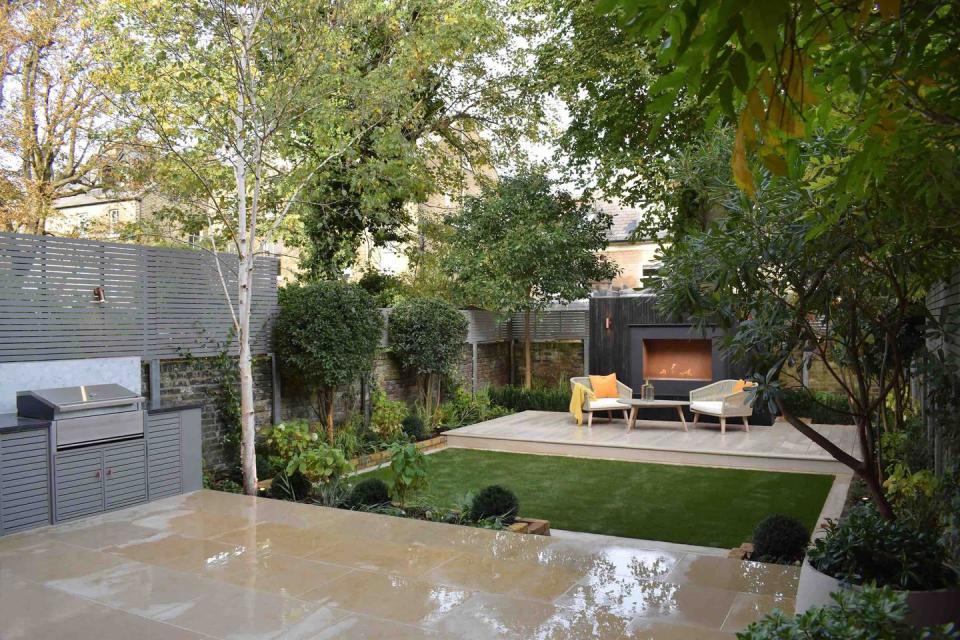
Outdoor kitchens work especially well when there is a solid straight wall to position the kitchen along or a useful alcove or natural indent, says Karen Bell, creative director of David Salisbury, specialists in conservatories and orangeries: 'But never position near a timber fence or structure, for fire risk reasons.'
You might want to incorporate a roof to provide shelter in all weathers, but make sure you factor in a chimney for ventilation. Karen thinks that an Italian-style loggia, an outside space with a roof but open sides, is an ideal solution to this, providing shelter and protection for the kitchen.
'Outdoor kitchens are also amazing for socialising due to their spaciousness,' adds Katie. 'When it starts to get colder, portable garden heaters are a great way to keep the party outside without having to retreat indoors.'
It has to feel right for the way you use your home and garden, but above all, consider your outdoor kitchen as an extension of your living space. 'Looking at trends such as bi-fold doors, seamless indoor/outdoor paving, and open-plan living spaces shows how people are shifting into a true "bring the indoors out" approach,' says Ross.
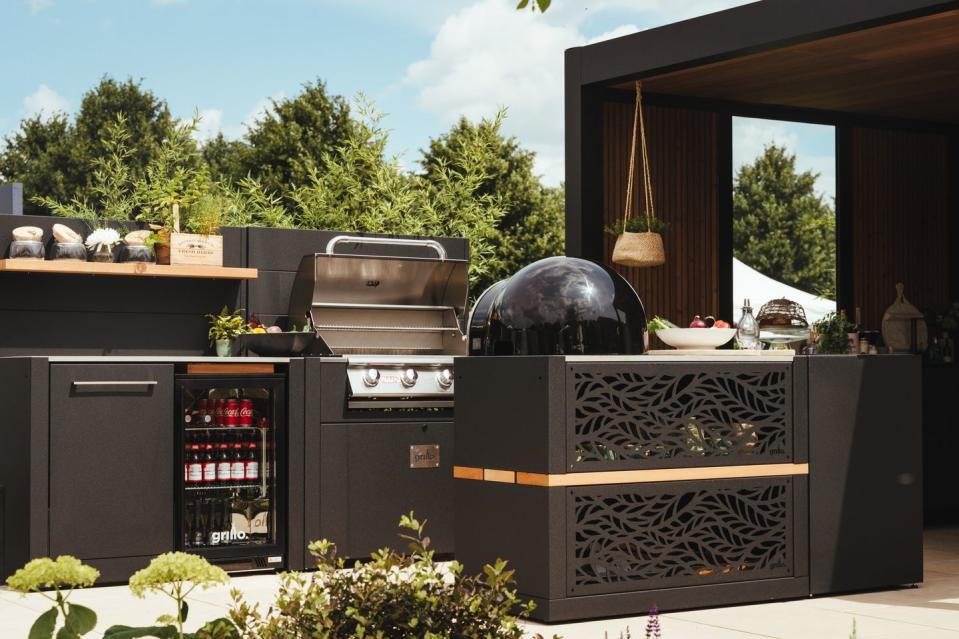
Space specifications
'The key considerations when installing an outdoor kitchen are to allow minimum space of 2.5 sqm for safe and easy working and ensure that the ground is flat and hard so that kitchen components have a stable base,' says Ross.
Remember the kitchen triangle principle, reminds Katie: 'It's useful to map out where you're going to do your cooking, prepping, washing and cleaning. Most kitchens are designed on a triangle-based strategy, of which each station lines up to create a triangle on plan.'
Also work out access routes, making sure that guests can move easily past the kitchen to reach the seating area. 'It's important to consider how you'll be using the space – will it be for intimate dinner parties, larger social gatherings or simply for relaxing family barbecues?,' says Declan Kingsley-Walsh, managing director of Morsø UK, which has a range of outdoor kitchens.
'This will not only determine elements like how much seating you'll need, but also the size and capacity of the appliances you include. The area you have to work with is also an important consideration, though it is surprising what you can fit into a relatively small space.'
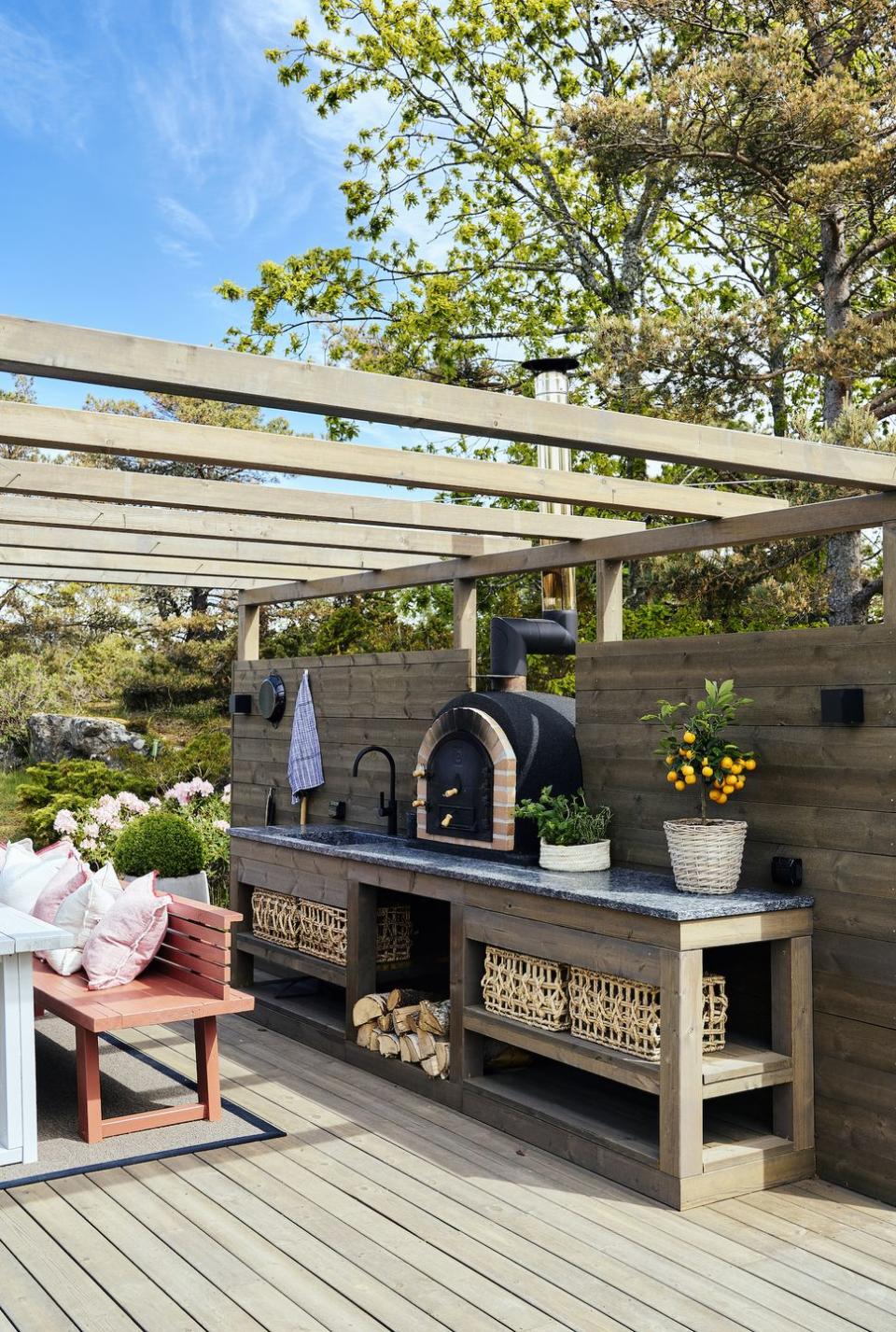
Recommended outdoor kitchen materials
An outdoor kitchen needs to be able to withstand extreme weather conditions. 'So be sure to choose materials that are durable and tough, like concrete countertops which are easy to clean, wipe down and maintain,' says Katie.
Even if you have a shelter, choose weatherproof materials. If you like the look of natural wood, choose a weatherproof variety such as seasoned oak, says Laura Davie, marketing manager at architectural and design surfaces company Cosentino UK. Other durable recommendations include stainless steel, carbon steel, brick, stone or composite for surfaces, and cast iron or stainless steel for appliances.
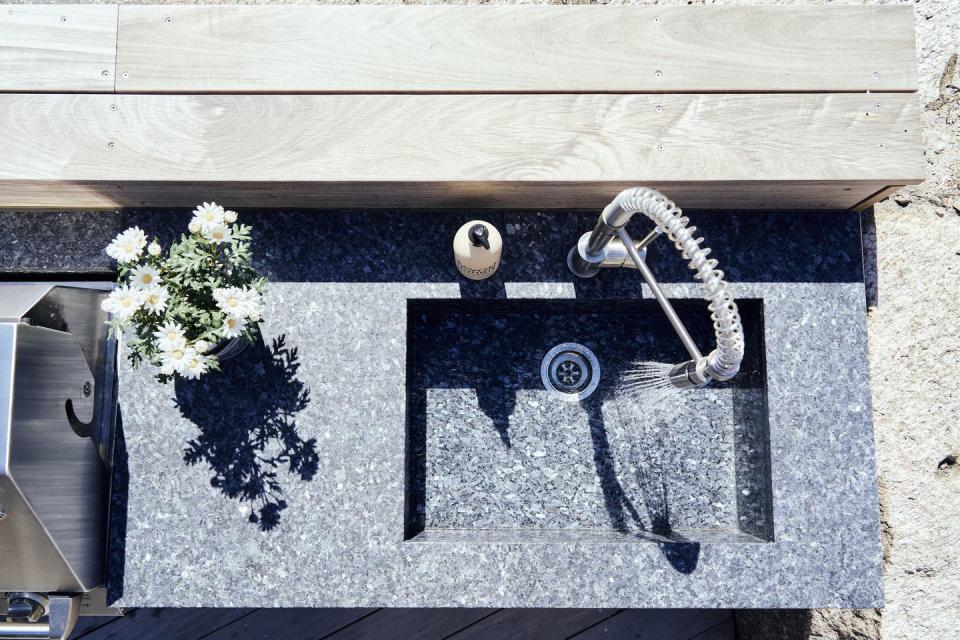
Appliances for an outdoor kitchen
For starters, you will definitely need a gas or charcoal-powered barbecue grill. Other possibles for your list include a pizza oven (which can double up as an extra barbecue), a rotisserie spit for perfectly roasted chicken, a smoker for long, slow aromatic cooking, at least one burner so you can rustle up a pan or two of paella, and a warming drawer to keep ready dishes at optimum temperature.
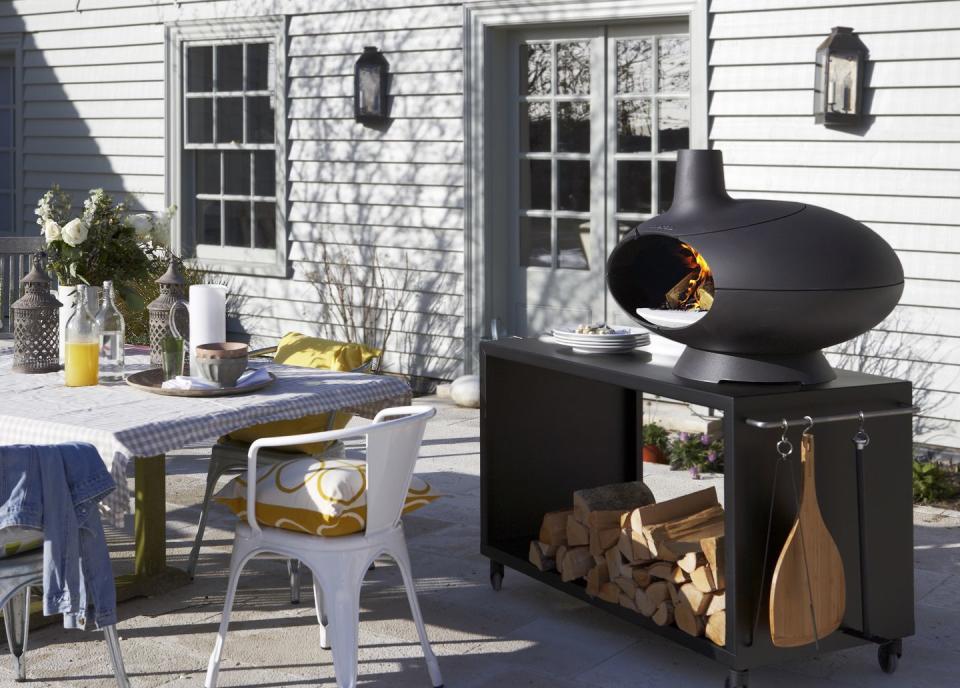
An outdoor refrigerator, from around £400, is a practical addition to any outdoor kitchen for food storage and drinks. Remember to include any electrical work and new water feeds into your plan and budget, says Declan: 'Installing the plumbing required can be costly. You could look to positioning your sink on an external wall of the house, below an existing outdoor tap to minimise the cost, but you'll still need to consider a hot water supply.'
Small outdoor kitchen ideas: can outdoor kitchens work in smaller spaces?
Yes, if you plan carefully and ensure that you don't overcrowd the cooking/socialising area with too many gadgets. 'The rise of modular appliances has encouraged a tailored approach to outdoor kitchens,' says Wayne Dance, managing director at InHouse Inspired Room Design. 'In particular, when designing for a small garden or patio, consider which appliances you will use the most and prioritise these.'
IKEA do a great outdoor kitchen range perfect for smaller spaces. Start with the Grillskar standalone unit, £444, with charcoal grill, island unit and work surface.
Use tiles to zone a smaller space. Attach them to an existing wall or create a freestanding panel as a backdrop for your cooking area. Pick up bargain end of line tiles, as you'll only need a few.
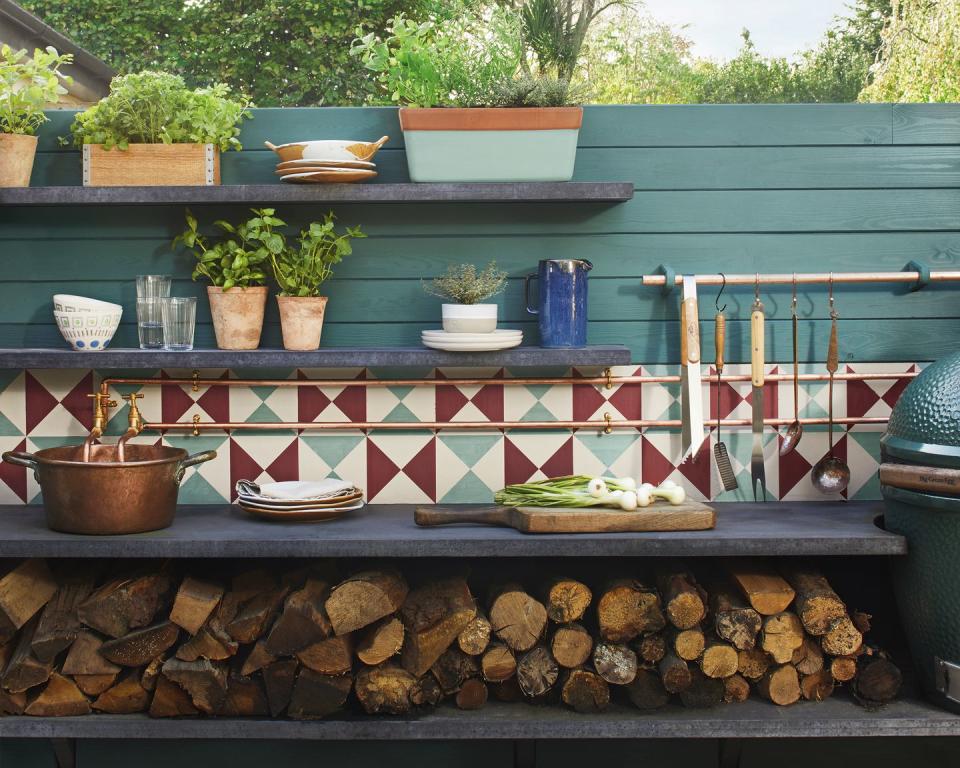
How much will an outdoor kitchen cost?
From around £500 for a simple standalone outdoor kitchen unit to upwards of £50,000 for a large outdoor kitchen with premium brand appliances.
Stainless steel is popular. Expect to pay around £2,000-£3,000 for a stainless steel freestanding outdoor kitchen, say online retailers My Outdoor Kitchen – its Kentucky stainless steel modular outdoor kitchen, £3,499, has a sink unit with cabinet storage, a large gas grill with infra-red, rotisserie, six burners, and a refrigerator.
To keep costs down, look online for a pre-made island or bar, and build up your kitchen from this. You can customise with stone or concrete work surfaces and add freestanding elements and appliances as you require.
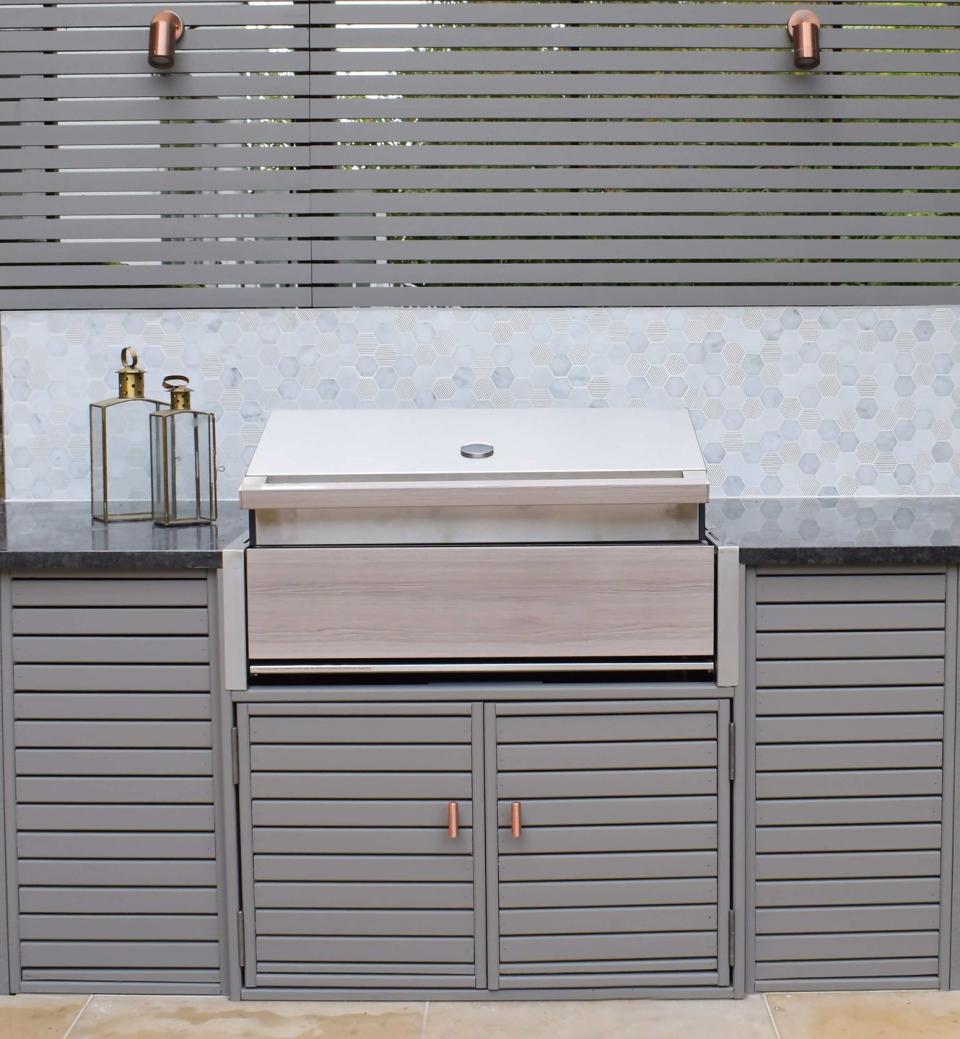
Maintaining an outdoor kitchen
Think about both the surface the kitchen will stand on and the kitchen itself. Stains from spilt food and liquids can be difficult to remove from porous unsealed stone paving, for instance. Treat with an acrylic sealant or opt for ceramic or porcelain tiles or concrete – practical and easy to keep clean. Build a neat bin into your design to keep the cooking area tidy. Wipe down stainless steel with warm soapy water, following the grain. Never use abrasive scourers as this will damage the surface. And invest in covers to protect your outdoor kitchen in rain and snow, to help cut down on maintenance.

Outdoor kitchen safety advice
When you plan the location of your outdoor kitchen, consider the immediate surroundings. Ensure the site is a safe distance from flammable materials such as thatched roofs and overhanging branches.
Always choose a work surface that can withstand high temperatures of up to 300 degrees C, says Hege Lundh, marketing director at Lundh Real Stone. And make sure your outdoor kitchen is weatherproof and that equipment and materials are outdoor-rated – outdoor sockets should be fitted with RCD (residual current device) circuit breakers.

Safety is also paramount where gas products are concerned as gas cylinders will be adjacent to the barbecue. Always check connectors are the correct size and in place securely.
Final bit of advice: If you have children or pets, design your outdoor kitchen with their safety in mind, creating sensible barriers with low walls or planting.
Follow House Beautiful on Instagram.
You Might Also Like

 Yahoo Finance
Yahoo Finance 
